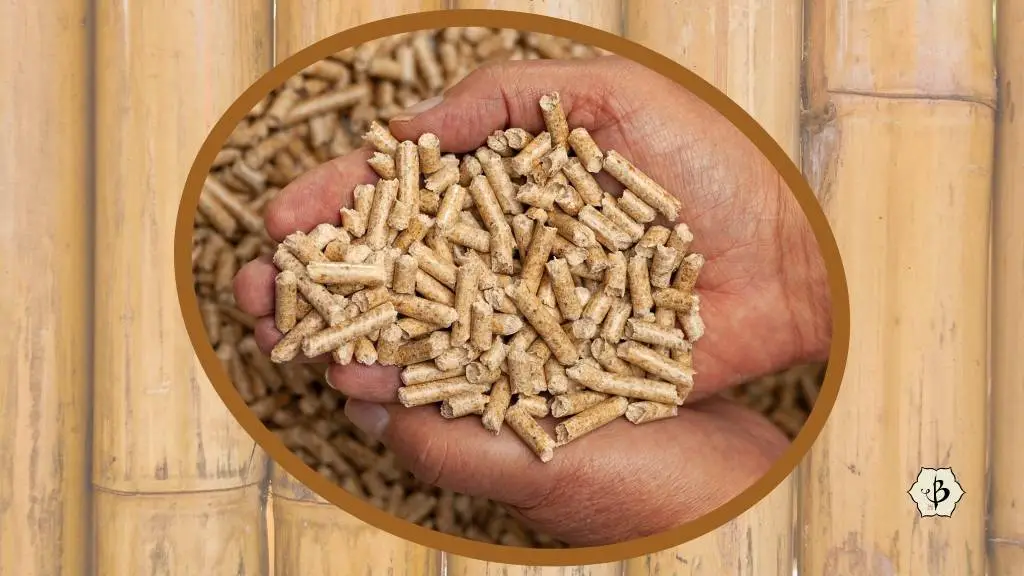In an age of fossil fuel dependency and rampant deforestation, bamboo is something of a miracle crop. We use it as an alternative to single-use plastics and pesticide-rich cotton. It even makes a superior building material for everything from furniture to houses. But did you know you can also use bamboo for fuel?
Bamboo is a prime natural resource for energy production. In terms of generating biomass fuel, no other plant grows or renews itself as quickly as bamboo. It may not be as clean as solar or geothermal energy, but until those superior sources are able to satisfy all of our energy needs, bamboo remains a far more sustainable alternative to coal and petroleum.
NOTE: This article first appeared in March 2020, last updated in July 2022.
Bamboo for energy in Japan
In 2015, the first bamboo-fueled power plant opened in Japan. And five years later it’s still gaining steam. The joint venture between the New Energy and Industrial Technology Development Organization (NEDO) and local industry has found a way to generate cleaner energy with a readily renewable and available resource.
The Kumamoto Prefecture, in southwestern Japan, has traditionally been a great bamboo-producing area, so it’s the perfect place to set up a biomass power plant using bamboo for fuel. The power plant is located in the town of Nankan, in Kumamoto.
Why burn bamboo for fuel?
The principle of burning bamboo for fuel is similar to any other biomass fuel production. Instead of burning fossil fuels that require millions of years of geological pressure, biomass grows annually under the rain and sun. Corn, hemp and wood logs are some common examples of biomass.
Bamboo makes an ideal resource for biomass because of how fast it grows. As a grass, it renews itself almost immediately, with no need to plow the fields and sow the seeds. When bamboo is cut down and harvested, the complex root systems remain alive and intact, ready to send up new shoots.

Furthermore, it produces about 30-35% more oxygen than an equal area of trees. In this way, bamboo battles climate change by reducing carbon in the atmosphere, both coming and going.
The Kumamoto Prefecture is the second greatest bamboo-producing region in Japan, after the Kagoshima Prefecture. But the demand for bamboo has actually been on the decline in Japan, at least for the variety of bamboo that grows there.
Demand for Moso Bamboo in China has been steadily growing as the bamboo flooring and textile industries expand, but not so much in Japan. So bamboo growers were eager to put their fast-growing and versatile crop to good use. And by doing so they gave the local economy a good kick and protected the environment at the same time.
Significant academic research has shown that bamboo can be a viable raw material for biomass energy production.
How do you burn bamboo for fuel?
Like a conventional power plant, the idea is to create heat that can be used to turn turbines. Usually, the heat boils water and creates steam which will turn the blades of a turbine. As the turbines spin, energy is generated. The bamboo-fueled power plant in Japan operates in this manner. They also burn bamboo to heat oil which evaporates and turns the turbines in the same way.
Initially, however, the power plant operators and engineers in Nankan were running into difficulties. When they began experimenting with bamboo for combustion, they found that it burned at too high a temperature. This caused the ash to harden and melt and muck up the equipment. The solution was to add other material, like cedar wood, which lowered the temperature of combustion and stopped the ash from melting.
So the plant did not become fully operational until August 2019. And now they are working to make it more efficient as a source of both heat and electricity for the local community. By 2023, the power plant expects to be incinerating about 8,800 metric tons of bamboo a year.
Bamboo pellets for energy
One of the most common forms of biomass fuel used around the world are compressed wood pellets. Traditionally, these pellets come from lumber and timber byproducts, such as inferior branches and sawdust. The vast forests of Russia the American Southeast provide some of the greatest quantities of wood pellets worldwide.

In recent months and years, a combination of factors has conspired to make bamboo pellets an extremely interesting alternative. For one thing, our species’ ravenous appetite for energy is depleting all manner of resources. You’ve probably seen the statistics and viewed the satellite photography. Simply put, the planet is running out of forests.
Meanwhile, as populations and consumption rates continue to rise, a global boycott of Russia has piled crisis on top of crisis. In Europe, they are removing the mothballs and bringing old coal-fueled power plants back online. But instead of coal, they are running them on biomass, more specifically, wood pellets.
Like lumber, there are significant quantities of waste associated with bamboo, including inferior poles, chips, and sawdust. These materials are ideal for pressing into pellets.
The uses of bamboo pellets go well beyond burning for fuel. They also make excellent bedding for animals big and small. And some mycologists use them as a substrate for growing mushrooms.
Contact Bambu Batu directly if you’re in need of bulk bamboo pellets for fuel or any other application.
Bamboo in the gas tank
In addition to fueling a power plant, researchers are also studying the use of bamboo biomass fuel for running cars. High in sugar, corn has been the primary source for this plant-based ethanol, but relying on food crops for fuel has drawbacks. Most people agree that corn, cassava, and other food crops can be put to better use by feeding people.
The study of non-food biomass for fuel has expanded in recent years. Trees and bamboo, for example, require far less fertilizer and attention to grow. But breaking down these woody plants, high in cellulose and lignin, can be difficult, involving a long and costly fermentation process. Currently, the cost of nitrogen-hungry enzymes that break non-food crops like bamboo into sugar seems to outweigh the benefits.
The latest methodology for converting bamboo into ethanol fuel uses a bacteria called Zymomonas mobilis. As an alternative to yeast-based fermentation, this microbe can capture nitrogen from the atmosphere and produce ethanol more quickly than other methods. But chemists and microbiologists agree that more research is needed before bamboo-powered cars will become a viable and beneficial alternative.
In the meantime, consider reducing your carbon footprint by carpooling, taking public transit, or riding a bamboo bicycle!
Further reading
If you found this article about bamboo fuel helpful and interesting, please consider sharing it or subscribing to the blog. You might also take a look at these related posts.
- Bamboo and Carbon Sequestration
- Fueling the future with bamboo ethanol
- Bamboo at the Salton Sea
- Bamboo for ecology
- Great books about bamboo
PHOTO CREDIT: Bamboo forest in Kyoto, Japan (Unsplash)

























